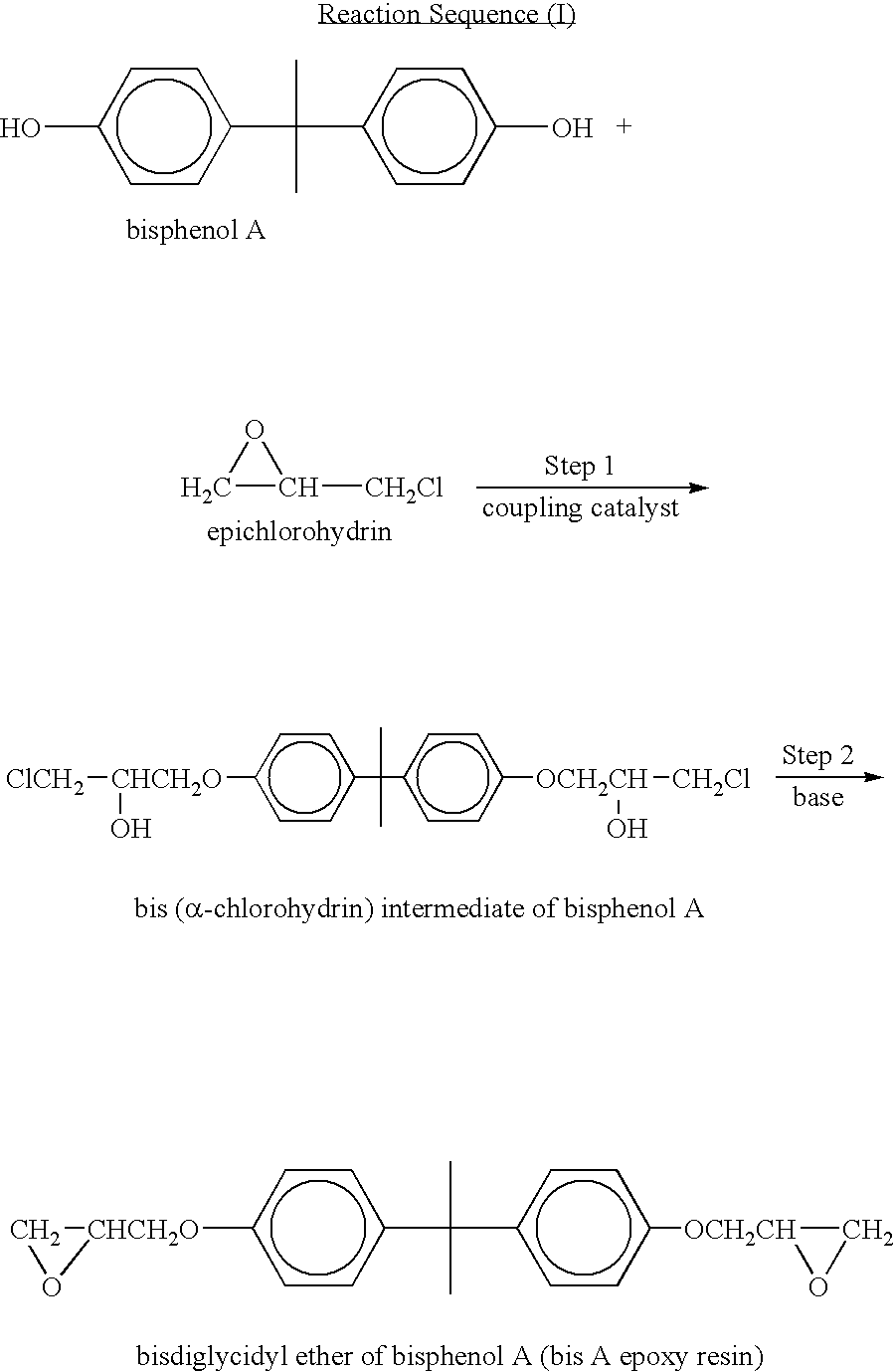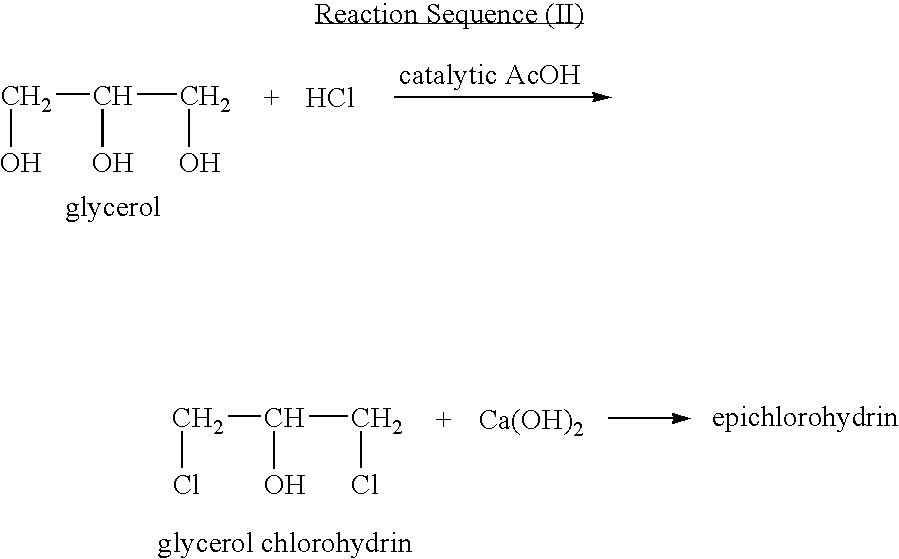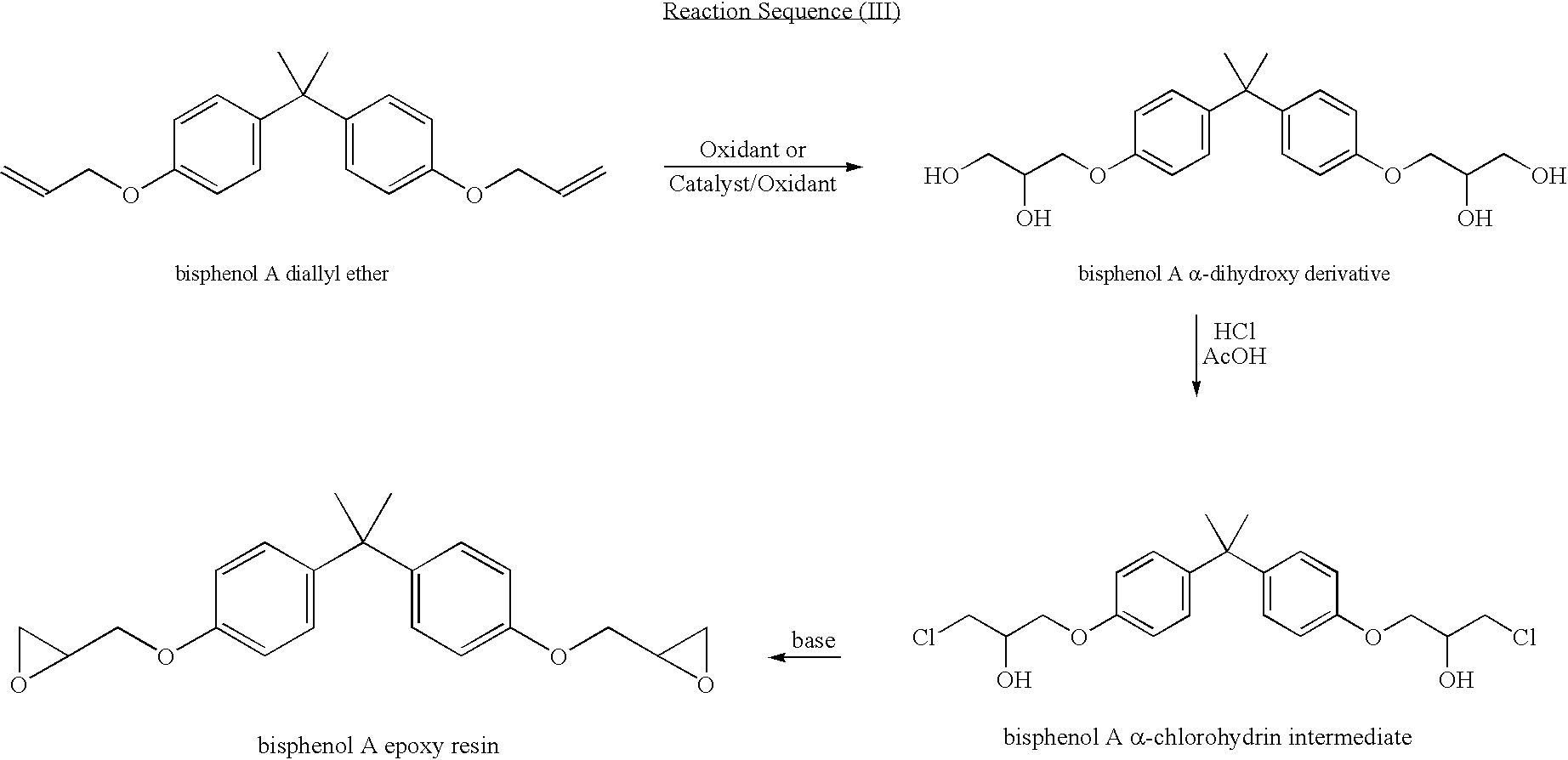Process for manufacturing an alpha-dihydroxy derivative and epoxy resins prepared therefrom
a technology of alpha-dihydroxy and epoxy resin, which is applied in the direction of organic chemistry, chemistry apparatus and processes, group 5/15 element organic compounds, etc., can solve the problems of large energy utilization and inefficient atom efficiency of second epoxide-containing compounds
- Summary
- Abstract
- Description
- Claims
- Application Information
AI Technical Summary
Benefits of technology
Problems solved by technology
Method used
Image
Examples
example 1
A. Conversion of bisphenol A to bisphenol A diallyl ether
[0234]Bisphenol A diallyl ether was synthesized as described in U.S. Pat. No. 4,740,330. In a four-necked reactor, equipped with a condenser, stirrer, thermometer with temperature controller, and an addition funnel, were added 800 mL of bis-(2-methoxy ethyl)ether(diglyme), 400 mL of dimethyl sulfoxide (DMSO), 228 g (1 mole) bisphenol-A, and 284 g (4 moles) of 85% KOH at ambient temperature (˜25° C.). The mixture was stirred and heated to 35-40° C., and the addition of 304 g (4 moles) of allyl chloride was begun. This reaction was exothermic and was controlled at less than 45° C. by controlling the allyl chloride addition rate. The allyl chloride was added over a 4-hour period, and the reaction was continued at 45° C. for an additional 12 hours to convert the bisphenol-A into diallyl ether. The reaction mixture was cooled to ambient temperature and filtered to remove salts formed in the reaction. The filtrate was mixed with 100...
example 2
A. Conversion of phenyl allyl ether to 2,3-dihydroxypropyl ether of phenol
[0244]Phenyl allyl ether (1.0 mL) (from Aldrich) was suspended in 10 mL of H2O and 10 mL of tert-butanol in a 100-mL round-bottom flask, and 3.32 mL of N-methyl morpholine N-oxide (50 wt % aqueous; 1.1 molar equivalents) was added to the flask. The resulting reaction mixture was stirred at room temperature, and 0.025 g of K2OsO4.2H2O (2 mol %) was added to the mixture. The reaction mixture was allowed to stir for 18 hours. Then 200 mg of Na2SO3 and 0.2 g of diatomaceous earth were added to the mixture. The reaction mixture was stirred an additional 1 hour and then filtered. The filtrate was extracted three times with 1 volume of ethyl acetate. The resulting extracts were combined, washed twice with 1 volume of 1 N HCl, washed with one volume of water, dried over NaHCO3 and Na2SO4, filtered, rotary evaporated, and dried under vacuum. The resulting white solid (1.00 g; 82% yield), which was analyzed by 1H NMR sp...
PUM
| Property | Measurement | Unit |
|---|---|---|
| temperature | aaaaa | aaaaa |
| temperature | aaaaa | aaaaa |
| temperatures | aaaaa | aaaaa |
Abstract
Description
Claims
Application Information
 Login to View More
Login to View More - R&D
- Intellectual Property
- Life Sciences
- Materials
- Tech Scout
- Unparalleled Data Quality
- Higher Quality Content
- 60% Fewer Hallucinations
Browse by: Latest US Patents, China's latest patents, Technical Efficacy Thesaurus, Application Domain, Technology Topic, Popular Technical Reports.
© 2025 PatSnap. All rights reserved.Legal|Privacy policy|Modern Slavery Act Transparency Statement|Sitemap|About US| Contact US: help@patsnap.com



